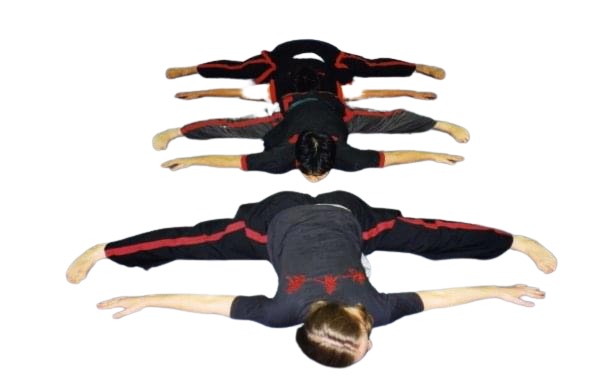Wing Chun and Health Conditions: Managing Chronic Pain and Improving Mobility
By Maurice Novoa a master under the Yuen Kay Shan, Ip Man and Pan Nam lineages.
Introduction:
Living with chronic pain and limited mobility can greatly impact one’s quality of life. Simple tasks become challenging, and the constant discomfort can take a toll on physical and mental well-being. As an experienced martial arts instructor with over 30 years of experience in Wing Chun Kung Fu, I have witnessed how this traditional Chinese martial art can offer unique benefits for individuals managing health conditions. In this article, we will explore how Wing Chun can help manage chronic pain and improve mobility, providing insights and practical tips for individuals.
Understanding Chronic Pain and Mobility Issues
Chronic pain is an ongoing condition that persists for an extended period, often resulting from underlying health conditions or injuries. It can affect various parts of the body, including the joints, muscles, and nerves. Mobility issues, on the other hand, involve limitations in movement range and the ability to perform everyday tasks comfortably.
Living with chronic pain and limited mobility can be frustrating and challenging. It affects not only physical abilities but also mental well-being, often leading to stress, anxiety, and depression. Finding effective strategies to manage pain and improve mobility becomes crucial for regaining a sense of control and enjoying a fulfilling life.
The Role of Wing Chun in Pain Management
Wing Chun, with its unique approach to body mechanics and alignment, can offer valuable tools for pain management. By focusing on proper posture and joint alignment, practitioners can alleviate strain on affected joints and muscles, reducing pain and discomfort.
The foundations of Wing Chun emphasize relaxed and natural movements, which minimize unnecessary tension in the body. This relaxed state helps alleviate muscle tightness and promotes better circulation, which can contribute to pain reduction. By learning to move efficiently and use body mechanics effectively, individuals can maximize their physical capabilities while minimizing the risk of exacerbating their conditions.
Techniques and Training Modifications for Health Conditions
When practicing Wing Chun with chronic pain or mobility limitations, it is essential to adapt techniques to individual needs and limitations. This may involve modifying footwork and striking techniques to minimize stress on the joints or finding alternative approaches that work best for specific health conditions.
For example, if you have a chronic shoulder condition, modifying training to avoid excessive strain on the affected joint is crucial. Adjustments in hand positions, angles, and power generation can be made to alleviate discomfort and prevent further injury. By working closely with a knowledgeable instructor, you can develop a personalized approach that supports your health goals while maintaining the integrity of the Wing Chun techniques.
I recall working with a student, who struggled with a chronic shoulder condition. By making slight modifications to her Wing Chun training, we were able to identify techniques that were less demanding on her shoulder joint. With consistent practice and attention to her body’s signals, she gradually gained strength and improved her overall mobility.
Developing Mindfulness and Mental Resilience
Managing chronic pain and mobility challenges often involves not only physical adjustments but also mental and emotional resilience. Wing Chun offers a unique opportunity to cultivate mindfulness and improve mental well-being, supporting individuals in their journey towards better health.
Through practicing Wing Chun, individuals learn to focus their attention and be present in the moment. By maintaining a heightened awareness of their body and movements, they develop a deeper connection between the mind and body. This heightened mindfulness can help individuals better manage pain, reduce stress levels, and improve overall mental well-being.
In addition to mindfulness, Wing Chun incorporates breathing exercises and meditation techniques. These practices promote relaxation, help regulate emotions, and enhance mental clarity. By integrating these techniques into daily life, individuals can develop effective coping mechanisms for dealing with pain and stress.
The Importance of Personalized Approach and Professional Guidance
While Wing Chun
can offer numerous benefits for managing chronic pain and improving mobility, it is crucial to seek guidance from experienced instructors and healthcare professionals. They can provide personalized advice tailored to your specific health conditions and help you design a training program that supports your goals.
A qualified Wing Chun instructor with an understanding of health conditions can guide you in adapting techniques, adjusting training intensity, and monitoring your progress. This personalized approach ensures that you work within your capabilities while pushing your limits safely. It is essential to communicate openly with your instructor about any discomfort or limitations you experience, allowing them to provide the necessary guidance and modifications.
Conclusion:
Living with chronic pain and mobility issues can be challenging, but Wing Chun offers valuable tools for managing these conditions. By focusing on proper posture, joint alignment, and body mechanics, Wing Chun can alleviate strain, reduce pain, and improve mobility. Through personalized training modifications, cultivating mindfulness, and seeking professional guidance, individuals can regain control of their health and well-being.
Embrace the journey of managing chronic pain and improving mobility with Wing Chun. Remember, consistency and patience are key. Join a supportive Wing Chun community and unlock your potential for better health and mobility. By incorporating Wing Chun into your lifestyle, you can discover a path towards improved physical and mental well-being.

